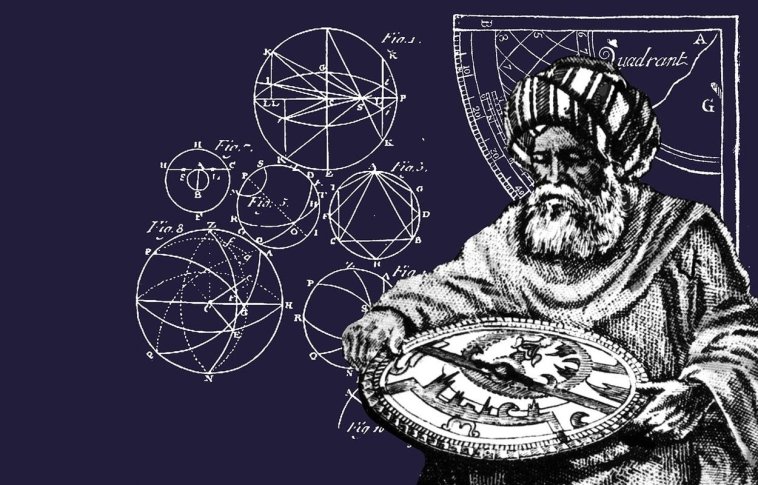Al-Battani, also known by his Latinized name Albategnius, was an Arab astronomer and mathematician born in 858 C.E. in Harran, a state of Battan in modern-day Turkey. His full name was Abu Abdallah Mohammad ibn Jabir ibn Sinan al-Raqqi al-Harrani al-Sabi al-Battani. He is often regarded as one of the greatest Muslim astronomers and his discoveries to astronomy and trigonometry played a considerable role in the advancement of science in the Middle Ages.
Al-Battani’s greatest fame came in Mathematics with the use of trigonometric ratios that are also used today. He also catalogued 489 stars and calculated the length of the solar year as 365 days, 5 hours, 48 minutes and 24 seconds, which was only minutes off the length later calculated using telescopes and atomic clocks. His notable book, Kitab az-Zij (Book of Astronomical tables) was translated into Latin by the name De Motu Stellarum (‘On the Motion of the Stars’) by Plato of Tivoli in 1116, and appeared in 1537 and again in 1645. Al-Battani’s work had a major influence on scientists such as Tycho Brahe, Kepler, Galileo and Copernicus. In fact, Copernicus in his book De Revolutionibus Orbium Clestium expresses his indebtedness to Al-Battani since the latter was able to produce more accurate measurements of the motion of the Sun than Copernicus himself.
It is also worth noting that the trigonometric methods introduced back then even serve as the basis of how GPS systems work today.
(Extracted from mvslim.com)
AUTHOR: Islamic Voice
Islamic Voice is a monthly Islamic magazine published in Bangalore. It is the largest English language Muslim publication in India. It is a comprehensive magazine, places a relatively high emphasis on social issues and strives to have a broad appeal. Since 1987, Islamic Voice has covered its fascinating namesake without fear or favour, with insight, accuracy, thoroughness and a well rounded perspective on a variety of subjects - be it the economy, politics, lifestyle, the arts, entertainment, travel, science, technology or health. That's why Islamic Voice is the country's most widely read publication, a position it has held for more than a decade. And that's why it makes sense to subscribe to Islamic Voice.
We represents all Muslim sects and shades of thought from all over India. We focus on "our" triumphs which, mostly, go unreported as well as constructively addresses our failures and shortcomings.
Editor-in-Chief: A.W. Sadatullah Khan
Genre: Current Affairs associated with Muslims
Subjects Covered:
Human Rights I Analysis I Special Reports I Issues I Book Reviews I National I International I Newsmakers I Community News I Islamic Perspectives I Classifieds I Opinions
Focus articles on:
Education and Children I Inter-faith Relations I Matrimony I Muslim economy I Muslim Perspective I The Muslim world I Society I Travel I The Western viewpoint I Women in Islam
Special focus on Faith and Law:
Fiqh I Hadith I Quran

COMMENTS